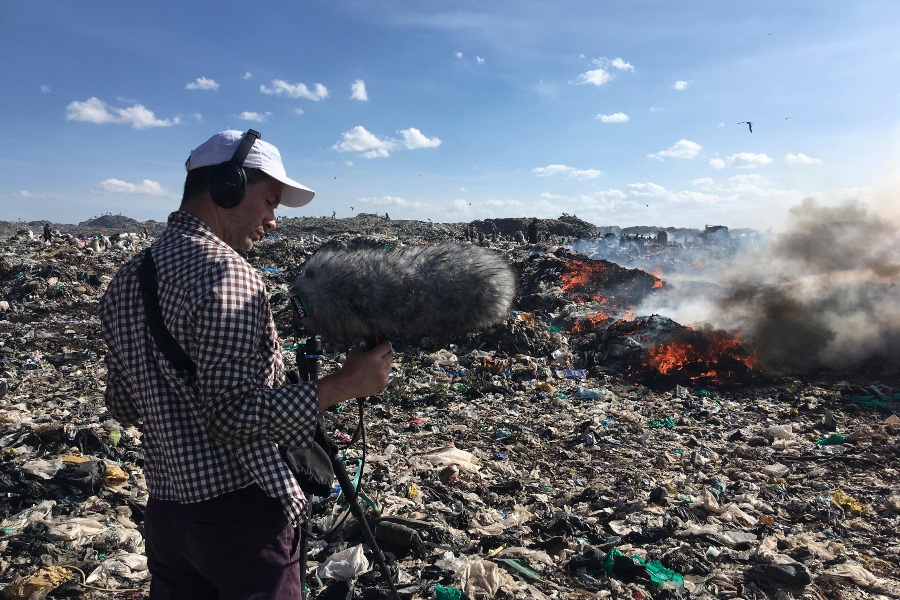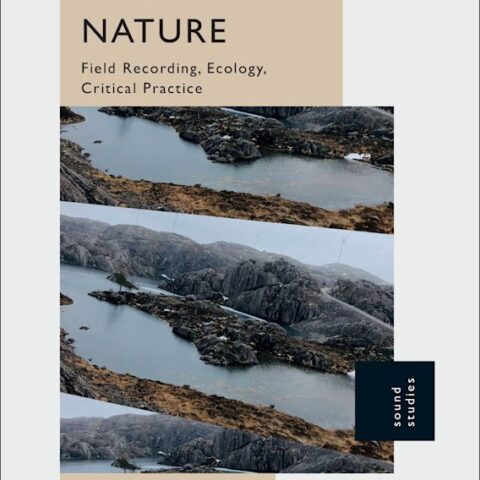
Photograph: Nao Takeuchi
Charles Shafaieh has published a great interview with Jacob Kirkegaard at National Sawdust Log talking about his sound work on post-mortem environments and ecological issues.
Jacob Kirkegaard listens where others don’t. Using accelerometers that detect vibrations instead of more traditional contact microphones, the Danish artist has captured the sounds of Chernobyl, morgues, calving glaciers, and even those produced by his own ear, all in an effort to go beyond what we assume are our sonic limits. In TESTIMONIUM, a new work that took him to the Dandora dumpsite in Nairobi as well as waste management facilities in Latvia and Denmark, he once again recorded sites whose existence are overlooked and completely unknown to many.
Inside a former bank vault in Oslo at this year’s Ultima Festival in September, Kirkegaard premiered the 25-minute, 8-channel audio-only version of TESTIMONIUM. The piece plays with our predispositions concerning trash: the high-pitched crinkling of plastic bags evokes the soundscape of crisp leaves or of crackling fire; the rhythmic pulsing of a production line, which shakes in order to cool down the slag that has just emerged from an oven, would not be out of place reverberating around a nightclub; even the gurgling of sewage from Copenhagen’s toilets entices the ear with its dense, soupy texture.
That these sounds are engaging, and even appealing at times, creates a sense of discomfort upon later hearing them accompanied by the footage of rivers of feces and burning mountains of trash in the audio-visual iteration of the piece, which also played during Ultima. But that psychic rupture is precisely the point, as it opens up a new space to contemplate the waste that is usually kept at a distance from society through highlighting an aspect of it that has gone unnoticed. This in turn complicates our visual reception of these spectacles. The soundscape’s abstractness, Kirkegaard suggests, might allow for more productive thought and conversation than pure intellectual discussions. ─ Charles Shafaieh
───
“For many years, I’ve made field recordings and taken those into other spaces in order to facilitate isolated listening experiences. I’m interested in pure listening without being obviously political. Some sound art is too brainy and makes you think, “Just write about it. I don’t need the work to understand this.” Because I come from music and sound is the starting place for all my work, I want every sound I create to appeal to the ear. I want my pieces to work by themselves so that you can just listen to them. Of course seeing bodies decomposing looks like a horror film, but if you can get past that, you understand it’s just nature doing its job. It’s beautiful—and it sounds great!
Regarding whether art should tackle issues like climate change is difficult to speak about because there are so many different types of art. I think it’s very cliché to think, “I want to save the world.” But what I think art can do is create a space, in my case, where you can listen without having to be pushed to either camp of whether X or Y is good or bad. When I engage with the media or hear politicians talking, I see people trying to convince me about what I should think. A sound environment can offer an alternative space for contemplation where you can just listen—to difficult things, to controversial things—without having to be alert. If you can have a space where you can really listen, you are able to feel something instead of only being with your brain. People came out of ISFALD, and said, “Wow! This is what global warming sounds like!” even though I never mention global warming in it.” ─ Jacob Kierkegaard




